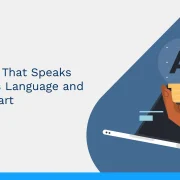Delve into the comparison between eLearning and traditional learning methods in this infographic. Uncover the benefits of each approach, from flexibility and accessibility in eLearning to the in-person interaction and structure of traditional methods.
Discover the best of both worlds with Hurix Digital. Elevate your learning journey today!

The Evolution of Learning: eLearning vs. Traditional Learning
The educational landscape is shifting, with eLearning gaining traction alongside traditional methods. Understanding the differences between these approaches helps educators and students make informed choices about their educational paths.
Key Advantages of eLearning
eLearning offers numerous benefits that cater to modern learners, including:
- Flexibility: Students can access materials anytime and anywhere, making it easier to balance education with other commitments, such as work or family responsibilities.
- Cost-Effectiveness: eLearning reduces expenses related to travel, materials, and venue hire, leading to significant savings for both students and educational institutions.
- Time Efficiency: Research shows eLearning can take 40-60% less time than traditional classroom instruction, allowing learners to absorb complex information without feeling overwhelmed.
Benefits of Traditional Learning
Despite eLearning’s rise, traditional learning remains relevant with several notable aspects:
- Structured Environment: Traditional classrooms provide a structured setting, beneficial for students who thrive on routine and discipline.
- In-Person Interaction: Face-to-face interactions with instructors and peers foster collaboration and immediate feedback, enhancing the learning experience.
- Access to Skilled Trainers: Experienced trainers in traditional settings can tailor their instruction to meet specific student needs on-the-spot, offering personalized guidance.
The Intersection of eLearning and Traditional Learning
Blended learning models combine elements of eLearning and traditional education, offering:
- Personalized Learning Paths: Students engage with content at their own pace while benefiting from direct interaction with educators, allowing for a more customized experience.
- Peer Learning Opportunities: Combining both methods encourages students to learn from each other, enhancing their understanding and retention of the material.
Conclusion
The debate over eLearning vs. traditional learning highlights each approach’s strengths and weaknesses. By recognizing key impact points, educators can create more effective learning experiences tailored to diverse student needs. As educational practices transform, a balanced approach may provide the best outcomes for all learners, ensuring education remains adaptable and inclusive.




